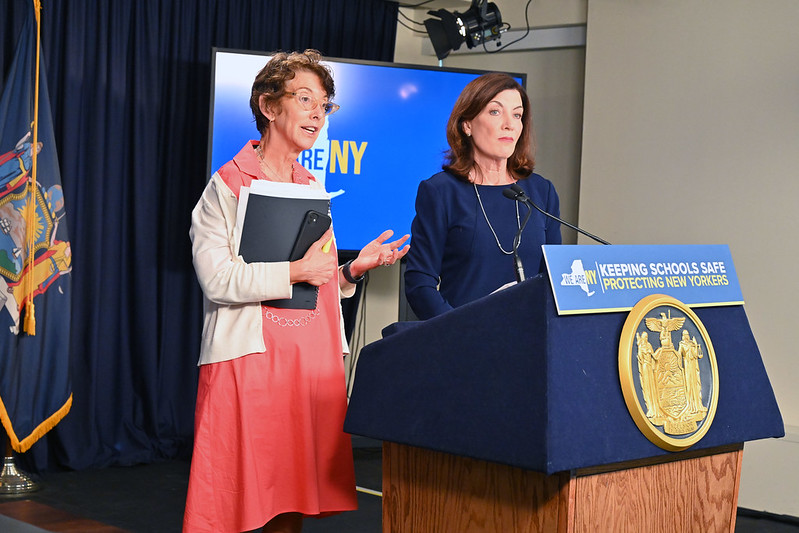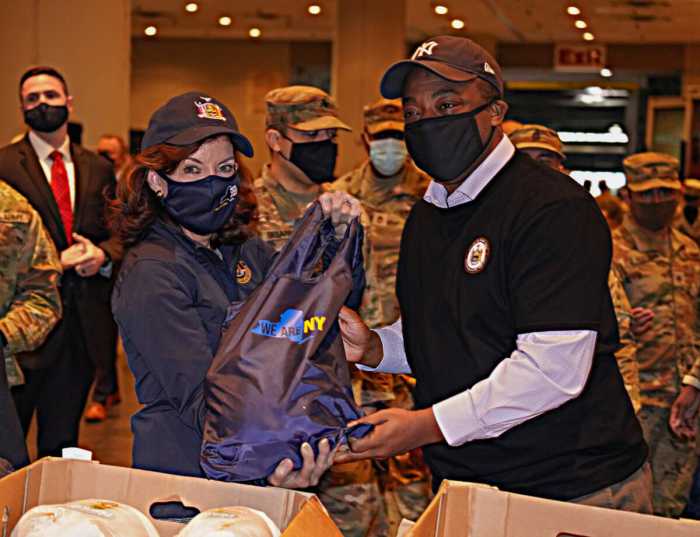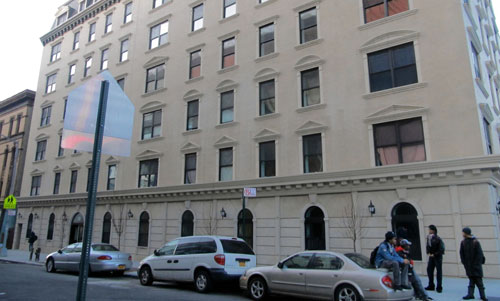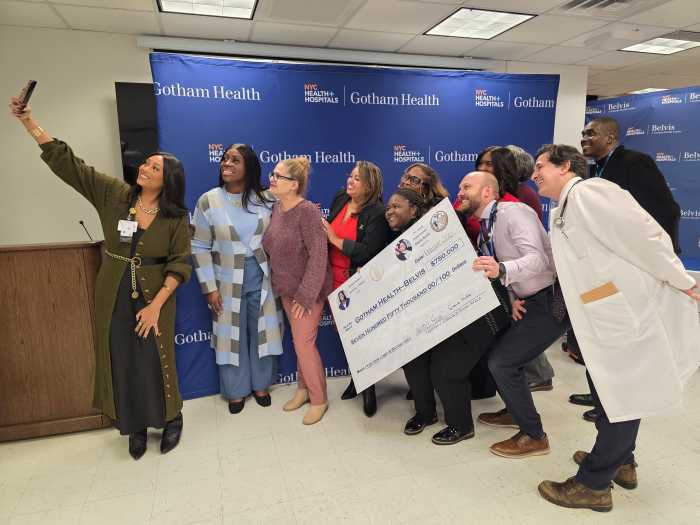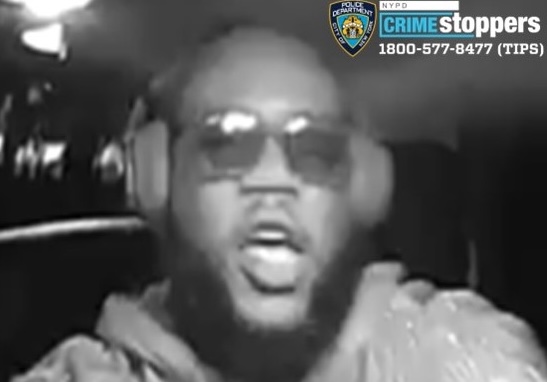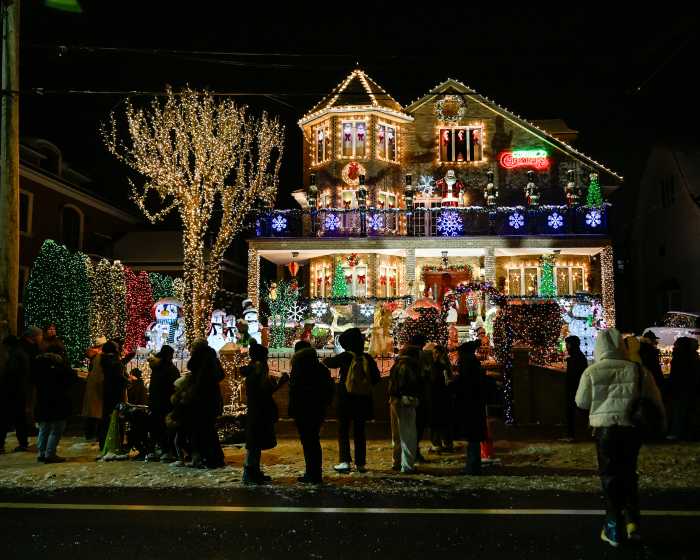From her midtown Manhattan office Thursday, while holding a news conference to sign a law that allows for the use of silent alarm systems for active school shooter situations, Governor Kathy Hochul condemned the U.S. Supreme Court decision striking down New York’s restrictions on carrying a firearm outside the home that came down just minutes earlier.
The justices’ 6-3 decision in New York State Rifle and Pistol Association v. Bruen struck down a New York law requiring people to demonstrate a particular need for carrying a gun in order to get a license to carry one in public. The justices said the requirement violates the Second Amendment right to “keep and bear arms.”
“As governor of the state of New York my main priority is to keep New Yorkers safe, but today the Supreme Court is sending us backwards in our efforts to protect families and prevent gun violence,” Hochul said. “And it’s particularly painful that this came down at this moment when we’re still dealing with families in pain from mass shootings that have occurred. And the loss of life of their beloved children and grandchildren.”
The ruling will have a major impact on states and cities like New York that have implemented tight restrictions on who can carry guns in public places. It was only the court’s second major ruling on the right to bear arms and the first that applied to public places.
According to the governor, language in the court’s decision dictates that the government must demonstrate firearms regulations are “consistent with this nation’s historical tradition of firearm regulation.”
“It’s absolutely shocking that they have taken away our rights to have reasonable restrictions,” Hochul said. “We can have restrictions on speech, you can’t yell fire in a crowded theater, but somehow there’s no restrictions allowed on the Second Amendment.”
Additionally, the governor said the ruling will put New Yorkers in significantly greater danger when out and about because it’ll make it far easier for individuals to legally carry concealed weapons in public spaces like the city’s subways.
“Does everyone understand what a concealed weapon means?” Hochul asked. “That you have no forewarning. That someone could hide a weapon on them and gun into our subways. Go into our grocery stores, like stores up in Buffalo, New York where I’m from. Go into a school in Parkland and Uvalde. This could place millions of New Yorkers in harm’s way. This decision isn’t just reckless, it’s reprehensible.”
Hochul said she’s meeting with state legislative leaders tonight to prepare for calling state lawmakers back to Albany for a special session – likely to take place in July – to pass workaround legislation that would allow the state to still impose restrictions on firearm permitting. Furthermore, she added, that they’re already looking at language to place restrictions around the ability to carry guns in what are known as “sensitive locations” – places where large groups of people gather like bars, restaurants, schools and airports.
Additionally, she said, they’re looking at changing the permitting process, implementing a higher threshold for those who want to obtain a concealed-carry permit, and requiring firearms training for those individuals as well. Plus, taking the position that concealed carry weapons aren’t allowed inside private businesses, unless the business chooses to specifically allow it on their property.
“In the days to come, we’ll have a plan, we’ll have legislation worked out with the legislature, we’ll have a date,” Hochul said. “And we will make the changes immediately.”
Elizabeth Fine, counsel to the governor, said the changes to the permitting process won’t take effect immediately because the particular case that sparked the decision – where two men sued the state for not issuing them the licenses they wanted – was remanded down to a lower court. But Fine said individuals seeking concealed carry permits will use Thursday’s decision to immediately apply for a concealed carry permit.
“The process will take whatever time it takes, but they would be able to rely on the Supreme Court case,” Fine said. “The two individuals who were plaintiffs in this case, their individual permanent applications, the case will be remanded to the Second Circuit into the district court. And the district court will order, presumably based on this decision, that they’re permitted to be granted.”


